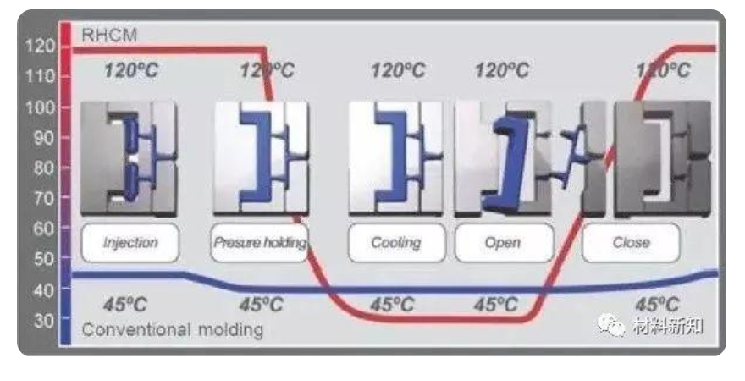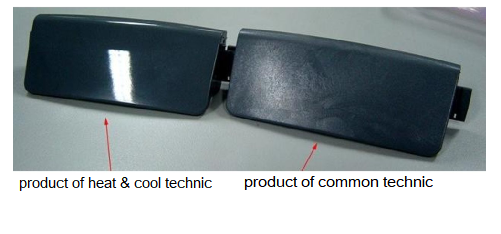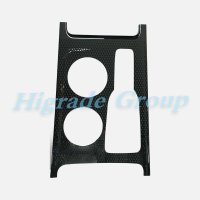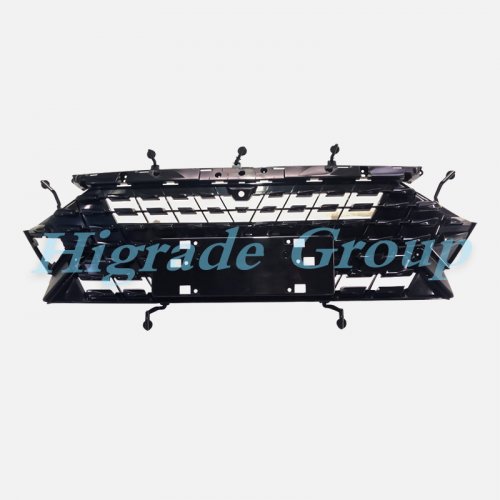Rapid Heat Cycle Mould (RHCM)- Rapid Heat Cycle Injection Mould
1. Technical Background of Heat & Cool Die
With the development of society, the progress of science and the improvement of people's living standards, especially in the industries of home appliances, communications, automobiles, daily necessities, medical quipment, etc., people have high requirements for the internal quality of plastic products, and the surface of plastic parts is high. Bright surface, lightness and thinness have also become the mainstream trend pursued by users, and the strength of plastics with 30%-50% glass fiber reinforced structure is also more and more accepted and common.
2. Technical principle of Rapid Heat Cycle Mould (RHCM)
The rapid cooling and rapid heating equipment heats the mold before injection, so that the mold temperature is quickly raised above the glass transition temperature of the plastic, and after the injection is completed, the mold temperature is quickly reduced to the ejection temperature. This is a molding process in which the mold temperature is variable during the forming process.This forming method takes advantage of the inherent characteristics of thermoplastics under high elasticity, which can effectively eliminate surface defects of plastic products, such as fusion lines, orange peel, and gas mark.Due to the higher molding temperature, the surface roughness of the plactic part is better than that of common forming.
3. Scope of application for Rapid Heat Cycle Mould (RHCM)
TV, monitors, stereos, automobiles, air conditioners, refrigerators, washing machines and other products that require high surface appearance quality.
4.The technology principle for Heat & Cool Die

5. Comparison of rapid cold and hot mold plastic parts with common plastic parts

6. The key technology for Rapid Heat Cycle Mould (RHCM)
Structure design method of plastic parts
Layout of gating system and CAE analysis and optimization of warpage deformation
Analysis and optimization of mold deformation, stress and fatigue strength
Heating pipeline layout and thermal field analysis and optimization
Optimized design of heat and cool mold structure
Ultra-high mirror polishing technology
temperature measurement, feedback and control technology
Optimization of injection molding parameters and production process control
7. Comparison of different heating methods of rapid cold and rapid heating molds
8. Mold design drawing
9. Supporting equipment for Heat & Cool Die
Steam mold temperature control cabinet
Electric boiler integrated steam mold temperature control cabinet
Electric heating mold temperature control cabinet
10. Plastic Products of Heat & Cool Die
11. Compare cost of Heat & Cool mould
Mold processing fee Increase by 10-15%
Mold material fee Increase by 10%
Mold accessories fee Increase by 5-10%
Overall mold cost Increase by about 30%
12. Cost analysis for heat and cool molding products
Cancel spraying and reduce costs by about 40-50%
Fuel power costs increase by 10-15%
Injection material cost increase by 20-25%
The overall cost of plastic parts is reduced by 10-15%
Considering the cost of molds and plastic parts comprehensively, as long as the output reaches more than 20,000 pieces, the total cost of high-gloss injection molding is lower than ordinary injection molding and spraying.








